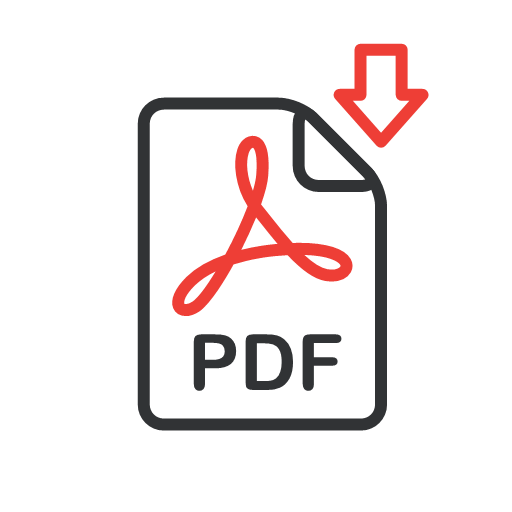KOMPETENSI KOMUNIKASI DARING KENISCAYAAN DI ERA DIGITAL
##plugins.themes.academic_pro.article.main##
Abstract
Online communication competence is one of the aspects needed when communicating online or communication based on internet technology. Online communication is increasingly unavoidable when the world including Indonesia is fighting the COVID-19 outbreak. Almost all activities are carried out online, such as work and study. However, the situation forcing people to communicate online to date still leaves obstacles. Starting from technical to non-technical obstacles. Technics such as poor network, geographic location that cannot reach signals, and quota costs. Non-technical obstacles occur when the community's ability to technology is minimal and it is difficult to build communication competencies. These obstacles have even resulted in victims, such as depression and dropping out of school. This situation allegedly occurred because students could not participate in online learning due to poor communication processes. Based on this background, this article discusses online communication competencies that are commonly used today, especially during the pandemic period and when the public realizes that the current situation is a portrait of a disruptive era, an era known as the era of digital technology use. This article is an overview of the results of previous research related to crisis management in education. However, this article focuses on communication competence as one of the research findings. To review these findings, researchers used a descriptive approach with literature studies. Based on the results of the analysis of phenomena and literature, the writer explains that online communication competence includes several aspects, namely empathy, good faith, adaptation, interaction, and the ability to manage communication. These aspects are divided into three elements, namely elements of affection, emotions, elements of cognition, and elements of behavior. In principle, online communication competence is not too different from face-to-face communication competence. However, the elements of affection, emotions consisting of empathy and good faith are the main emphasis as a starting point in building online communication competencies which are a necessity in the digital era.
##plugins.themes.academic_pro.article.details##
References
- Adams, D., Joo, M., Sumintono, B., & Pei, O. (2019). Blended learning engagement in public and private higher education institutions: a differential item functioning analysis of students’ background. Malaysian Journal of Learning and Instruction (MJLI), 17(1), 133–158.
- Adams, D., Sumintono, B., Mohamed, A., & Noor, N. S. M. (2018). E-learning readiness among students of diverse backgrounds in a leading Malaysian higher education institution. Malaysian Journal of Learning and Instruction, 15(2), 227–256.
- Aga. (2020). KPAI: Banyak Siswa Stres Hingga Putus Sekolah karena Belajar Daring. Antara. Retrieved from https://www.medcom.id/pendidikan/news-pendidikan/Rb10xmXN-kpai-banyak-siswa-stres-hingga-putus-sekolah-karena-belajar-daring
- Anisti, & Hidayat, D. (2015). Pemanfaatan Media Cyber Pr Jelang Asean Community. Jurnal Ilmu Komunikasi (J-IKA), II(1), 11–22.
- Barni, M. (2019). Tantangan Pendidian di Era Milenial. Jurnal Teansformatif, 3(1), 99–116.
- Batubara, A. K. (2011). Urgensi Kompetensi Komunikasi Pustakawan dalam Memberikan Layanan kepada Pemustaka. Jurnal Iqra, 5(01), 50–58.
- Fitri, H., & Putra, R. B. (2019). The Impact of Learning Culture on Readiness to Online Learning Through Learning Satisfaction as Intervening Variable the Industrial Era 4.0. Jurnal Apresiasi Ekonomi, 7(3), 309–316.
- Griffin, E. (2011). A First Look At Communication Theory. (T. Z. Ackley, Ed.) (8th ed.). New York: McGraw-Hill. Retrieved from http://mhhe.com
- Hidayat, D., Anisti, Purwadhi, & Wibawa, D. (2020). Crisis Management and Communication Experience in Education During the CoVid– 19 Pandemic in Indonesia. Jurnal Komunikasi: Malaysian Journal of Communication, 36(3), 67–82. http://doi.org/10.17576/JKMJC-2020-3603-05
- Hidayat, D., Kuswarno, E., Zubair, F., & Hafiar, H. (2018). Public Relations Communication Behavior Through a Local-Wisdom Approach : The Findings of Public Relations Components Via Ethnography as Methodology. Malaysian Journal of Communication, 34(3), 56–72.
- Hidayat, D., & Noeraida. (2020). Pengalaman Komunikasi Siswa Melakukan Kelas Online Selama Pandemi COVID-19. Jurnal Ilmu Komunikasi Efek, 3(2), 172–182. http://doi.org/10.32534/jike.v3i2.1017
- Hidayat, D., Teguh, M., Laurentsia, J. S., Pascarina, P. A., Astuty, S., Widaningsih, T. T., … Novianti, E. (2019). PUBLIC RELATIONS DAN PERIKLANAN. Yogyakarta: Buku Litera.
- Jamaluddin, D., Ratnasih, T., Gunawan, H., & Paujiah, E. (2020). Pembelajaran Daring Masa Pandemik Covid-19 Pada Calon Guru : Hambatan, Solusi dan Proyeksi. Karya Tulis Ilmiah UIN Sunan Gunung Djjati Bandung, 1–10.
- Nadya, K., & Hidayat, D. (2016). Makna Hubungan Antarpribadi Melalui Media Online Tinder. Jurnal Komunikasi, III(1), 1–11.
- Omar, N. (2018). The relationship components of communication competence in the direct selling process in Malaysia. Jurnal Komunikasi: Malaysian Journal of Communication, 34(1), 37–54. http://doi.org/10.17576/JKMJC-2018-3401-03
- Susilo, A., Rumende, C. M., Pitoyo, C. W., Santoso, W. D., Yulianti, M., Herikurniawan, H., … Yunihastuti, E. (2020). Coronavirus Disease 2019: Tinjauan Literatur Terkini. Jurnal Penyakit Dalam Indonesia, 7(1), 45. http://doi.org/10.7454/jpdi.v7i1.415
 Download PDF
Download PDF